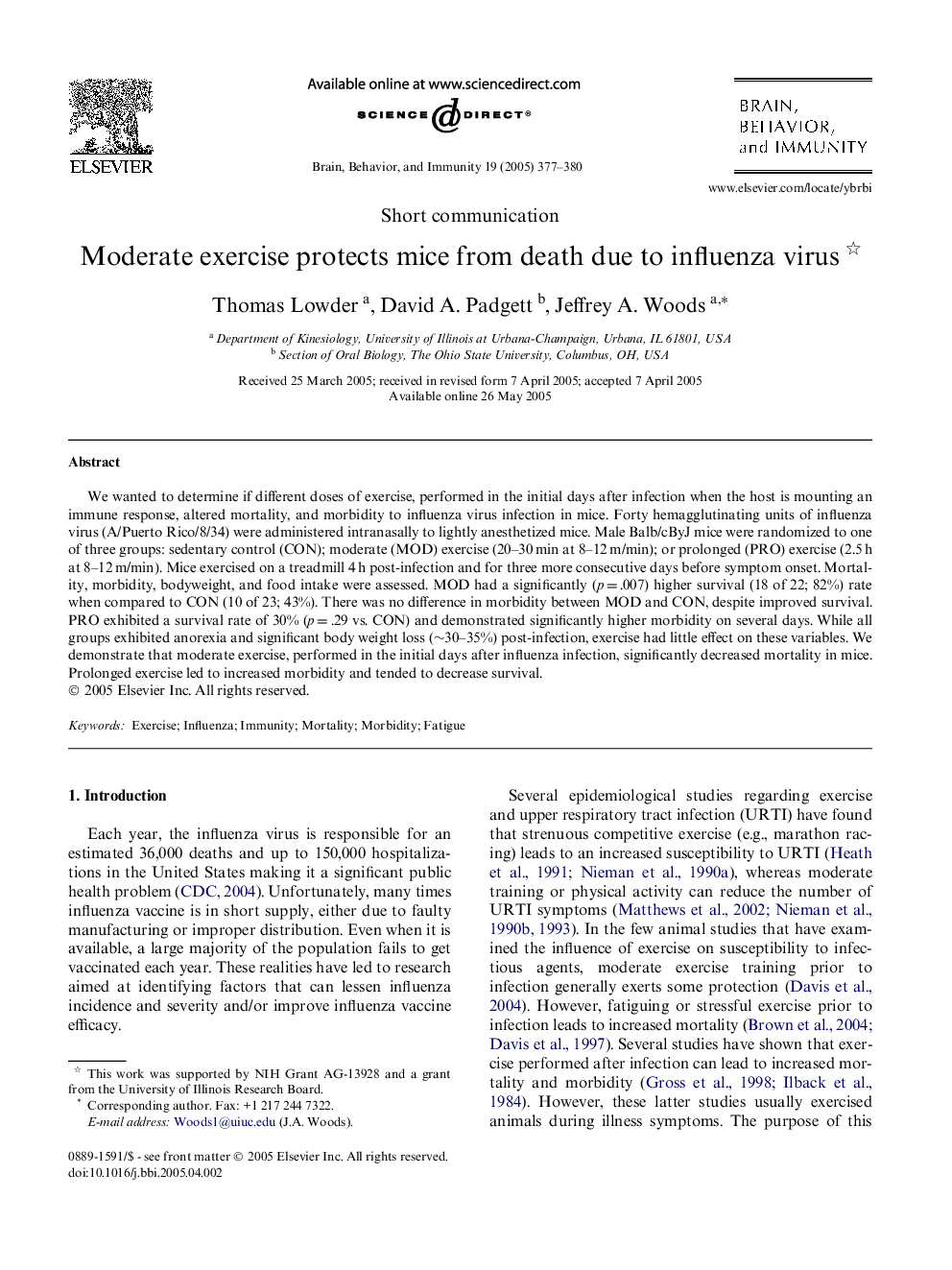| Article ID | Journal | Published Year | Pages | File Type |
|---|---|---|---|---|
| 10455439 | Brain, Behavior, and Immunity | 2005 | 4 Pages |
Abstract
We wanted to determine if different doses of exercise, performed in the initial days after infection when the host is mounting an immune response, altered mortality, and morbidity to influenza virus infection in mice. Forty hemagglutinating units of influenza virus (A/Puerto Rico/8/34) were administered intranasally to lightly anesthetized mice. Male Balb/cByJ mice were randomized to one of three groups: sedentary control (CON); moderate (MOD) exercise (20-30 min at 8-12 m/min); or prolonged (PRO) exercise (2.5 h at 8-12 m/min). Mice exercised on a treadmill 4 h post-infection and for three more consecutive days before symptom onset. Mortality, morbidity, bodyweight, and food intake were assessed. MOD had a significantly (p = .007) higher survival (18 of 22; 82%) rate when compared to CON (10 of 23; 43%). There was no difference in morbidity between MOD and CON, despite improved survival. PRO exhibited a survival rate of 30% (p = .29 vs. CON) and demonstrated significantly higher morbidity on several days. While all groups exhibited anorexia and significant body weight loss (â¼30-35%) post-infection, exercise had little effect on these variables. We demonstrate that moderate exercise, performed in the initial days after influenza infection, significantly decreased mortality in mice. Prolonged exercise led to increased morbidity and tended to decrease survival.
Related Topics
Life Sciences
Immunology and Microbiology
Immunology
Authors
Thomas Lowder, David A. Padgett, Jeffrey A. Woods,
